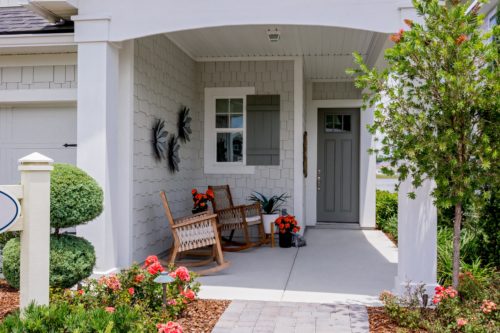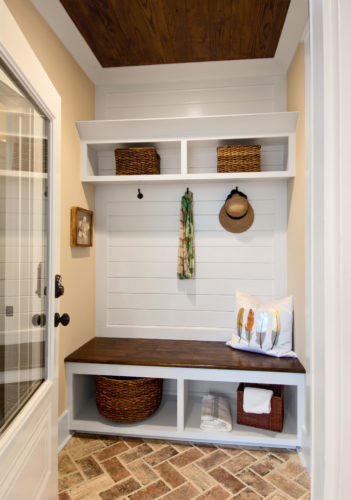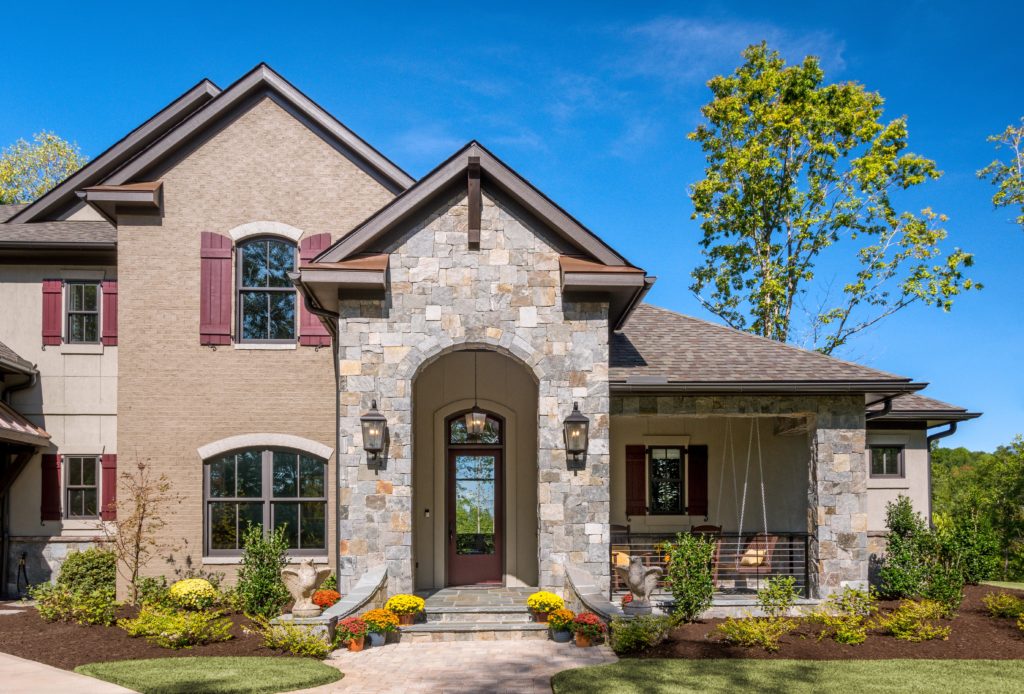Are your buyers seeing double? In many people’s minds, double front doors represent elegance and prestige. Perhaps it’s the idea of a grand entrance that they’ve seen in the likes of the Biltmore Estate or the White House.

I’ll admit, these “houses” make a fairly convincing case for double doors… But should these grand and formal double doors still be used in our (much) smaller, less formal homes? I believe that, in most circumstances, double doors just aren’t worth the hassle. After reading what you may have to give up for these doors, you may find yourself agreeing (or disagreeing!). Let’s explore.
Formal vs. Informal
Today’s plans focus more on informal spaces – where most buyers actually live in their houses – instead of the formal spaces that rarely see substantial use. The formal foyer, for example, is one of those spaces that are used less frequently. The issue isn’t so much the doors themselves, but rather what you might be sacrificing by specifying them. How badly do you want those wider double doors? Enough to potentially sacrifice precious square footage from the rest of the house?
Double doors require adding width to the foyer: anywhere from eighteen inches to three feet. Multiply that by the length of the foyer, and you could be taking up an additional 100 square feet. Not a big deal in the 175,000 square foot Biltmore Estate, but when working with a limited footprint, this could be a deal-breaker.
Instead, we focus a great deal on the informal entry into the home – the one from the garage into the home. This entry is used throughout the day, every day and by every family member. One often-seen detail includes an entry through the laundry room, and while doing so often cuts down on square footage, it also takes away the sense of arrival. We believe coming home is a special event, whether from a crazy day at school, fighting 5 o’clock traffic, from deployment overseas to everything in between. If we can create an entry that eases the stress of the outside world, that’s far preferable to walking into a cluttered and noisy laundry room.

Practicality
When the front door is used, typically only one door is opened. In fact, opening that second door tends to be a bit cumbersome (unpinning it from the top and bottom) and not the glamorous entry that we envision. Guests who are unfamiliar with the home often don’t know which door is the operable door and which one is fixed, making for a slightly awkward entrance. While not major, issues like these are often avoided with an elegant, single door.
Double doors are inherently less secure, as one door is tied to a “pinned” door versus the structure of the house. In a high wind zone, these doors need to swing out to minimize water intrusion from windblown rain.
Alternatives to Double Doors
If your buyers are still looking for more drama and uniqueness for the front door, there are many options available in addition to adding sidelights and transoms. For starters, you can use a 42” wide front door. This is especially prevalent in Arts and Craft style elevations. The generous size gives you all the grandness without sacrificing security or ease of operation. Add glass to the door – clear, patterned or opaque – for added detail.

Photo by Johnson Pictures, Inc. 
Photo by Matt Heligrath, Clopay Building Products. Copyright 2017. All rights reserved.
Still want more drama? How about an arched topped door – whether pointed elliptical or half round? Did I just hear a collective groan from purchasing agents reading this now? But before you let your imagination run wild with front door selections, consider what specialty door complements the architectural style of the home.
Front doors are our first impression of the home, so we recognize the importance of getting this critical design element right. What are your thoughts on double doors? Are your buyers requesting them? Do you offer them? Do you love them or hate them? Am I off my rocker? Should we agree to disagree? Let me know!

Post courtesy of Housing Design Matters, a full service architecture firm with offices in Jacksonville, Tampa, and Chicago offering residential design services to builders.
Follow the Housing Design Matters blog for more design ideas and inspiration for your next project.

